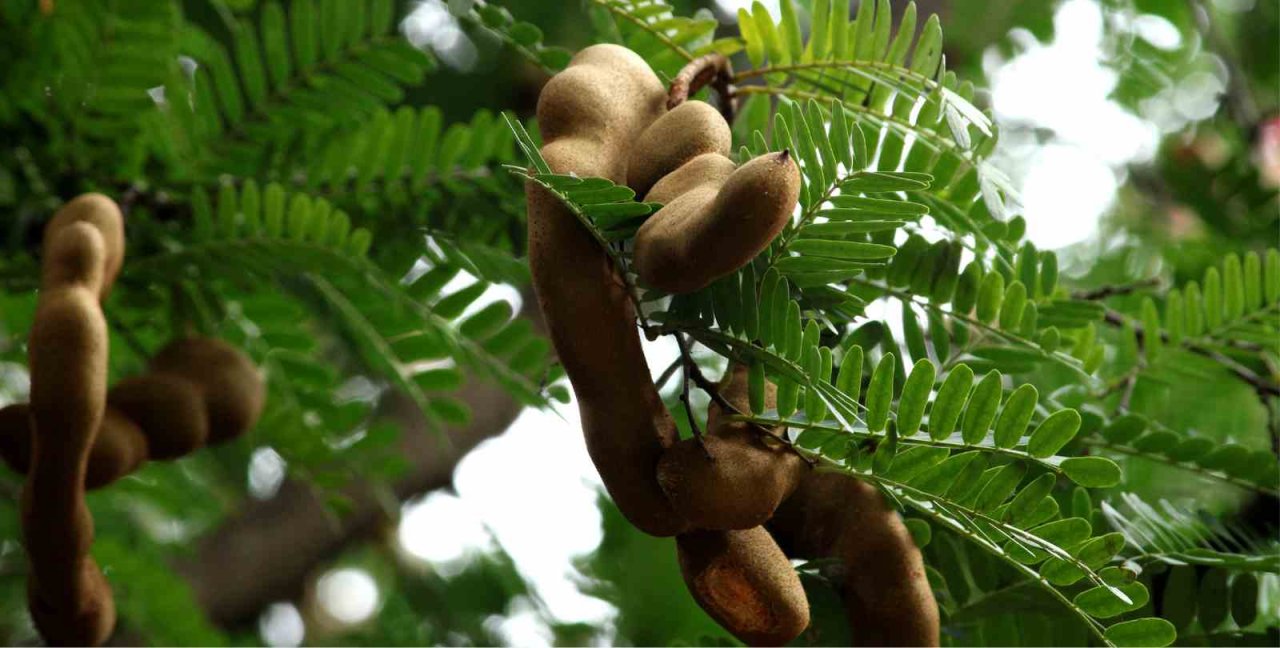
Tamarind is a tropical fruit that grows on the tamarind tree, Tamarindus indica. It contains a sweet and tangy pulp that is widely used in cooking to add flavor to foods, sauces, and sweets. Tamarind is also known as aamli and “Indian date”.
Tamarind includes a nutrient-rich, fibrous pulp that may have antioxidant, anti-fungal, anti-bacterial, and anti-viral properties. It may possibly have medicinal qualities.
The tree produces pod-like fruits that have a sweet-sour pulp used in many culinary uses. The pulp is widely used in cooking to lend a tangy taste to dishes, notably in Asian, Latin American, and Middle Eastern cuisines. It may be used in sauces, chutneys, drinks, and even desserts.
Benefits of Tamarind
Rich in Nutrients
Tamarind is a wonderful source of vital minerals and vitamins, especially vitamin C, B vitamins, magnesium, potassium, calcium, and iron.
Antioxidant Properties
Tamarind includes antioxidants such as polyphenols and flavonoids, which assist to neutralize damaging free radicals in the body and reduce oxidative stress.
Digestive Aid
Tamarind has long been used in traditional medicine as a cure for digestive disorders such as constipation, diarrhea, and indigestion. Its high fiber content helps encourage regular bowel motions and aids in digestion.
Heart Health
Tamarind may have good impacts on heart health by decreasing cholesterol levels and reducing blood pressure owing to its fiber and potassium content.
Anti-inflammatory
Tamarind includes chemicals with anti-inflammatory effects, which may help reduce inflammation in the body and alleviate symptoms of illnesses including arthritis and inflammatory bowel disease.
Blood Sugar Control
tamarind may help manage blood sugar levels, potentially helping persons with diabetes. It may enhance insulin sensitivity and minimize the absorption of glucose from the diet.
Weight Management
The fiber in tamarind can help enhance feelings of fullness and lower hunger, which may benefit in weight management by decreasing calorie intake.
Skin Health
Tamarind pulp may be used topically to the skin to aid wound healing, ease inflammation, and lighten dark spots due to its antibacterial and exfoliating characteristics.
Medical use of Tamarind
Digestive Health
Tamarind has long been used as a cure for digestive difficulties such as constipation, diarrhea, and indigestion. Its high fiber content can assist encourage regular bowel motions and ease stomach pain.
Anti-inflammatory
Tamarind includes anti-inflammatory effects, which may help reduce inflammation in the body and improve symptoms of inflammatory illnesses such as arthritis and inflammatory bowel disease.
Heart Health
Tamarind may have good impacts on heart health by decreasing cholesterol levels, reducing blood pressure, and enhancing overall cardiovascular function. These benefits may be attributable to its fiber and potassium content.
Blood Sugar Control
Tamarind may help manage blood sugar levels and enhance insulin sensitivity, potentially aiding persons with diabetes. It may limit the absorption of glucose from the food and assist regulate blood sugar levels.
Antibacterial Activity
Tamarind displays antibacterial effects due to its abundance of chemicals such as polyphenols and flavonoids. These qualities may assist fight against dangerous bacteria, viruses, and fungus, adding to general immunological health.
Wound Healing
Tamarind pulp can be administered topically to wounds to improve healing and prevent infection. Its antibacterial characteristics help protect the wound from infections, while its high vitamin C concentration assists in collagen formation, needed for tissue regeneration.
Liver Health
Tamarind may have hepatoprotective benefits, helping to protect the liver from damage caused by toxins or oxidative stress. It may also promote liver function by stimulating detoxification pathways.
Skin Care
Tamarind pulp is utilized in skincare products for its exfoliating and whitening effects. It can help remove dead skin cells, unclog pores, and brighten dark spots, leaving the skin smooth and beautiful.


